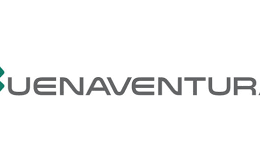The traditional 60/40 portfolio has been under pressure ever since the sharp reset in interest rates began in 2022. Bonds—long regarded as the ballast to equities—have lost some of their defensive power. Rising yields punished fixed-rate securities, and correlations between stocks and bonds moved higher, eroding diversification. In today’s “higher for longer” world, investors are searching for income solutions that don’t buckle under rate volatility.
This has put floating-rate strategies at the center of the conversation. Short-term floating-rate notes (FRNs), private credit, mortgage investment corporations (MICs), and collateralized loan obligations (CLOs) all share one important quality: they reset income in step with rates, insulating portfolios from duration risk and offering a more adaptive approach to fixed income.
Floating-Rate Notes: Adaptive Income in Public Markets
Short-term FRNs—typically with maturities of one to three years—have become a straightforward way to reduce interest-rate sensitivity without sacrificing yield. Their coupons are tied to benchmarks such as SOFR, adjusting higher as rates rise. Prices remain relatively stable in volatile environments, making FRNs particularly effective when central banks are holding policy tight.
The trade-off is clear: FRNs provide stability and income growth in a rising-rate cycle, but they offer little in the way of capital appreciation. When rates fall, the income stream adjusts downward just as quickly.
Private Credit: Yield Enhancement with Floating-Rate Protection
Private credit extends the same floating-rate advantage into direct lending markets. Loans to mid-market businesses are often structured with spreads over floating benchmarks, allowing investors to benefit as rates move higher. The yield profile is attractive—often well above traditional bonds—though investors must accept illiquidity and heightened borrower credit risk in return.
For institutions and high-net-worth investors, private credit has become a compelling complement to public fixed income, offering both diversification and income resilience.
Mortgage Investment Corporations: Rate-Linked Real Estate Income
In Canada, mortgage investment corporations (MICs) provide another floating-rate avenue. MICs pool capital to fund diversified portfolios of short-term residential and commercial mortgages. Because these loans are often tied to prime rates, investor distributions rise when central bank policy tightens.
MICs appeal to investors seeking steady income and low duration exposure. Performance is linked to the quality of the underwriting, and big picture, the health of the underlying real estate market. Credit risk remains a factor, but the short-term structure helps mitigate prolonged exposure.
CLOs: Institutional Floating-Rate Access
Collateralized loan obligations (CLOs) package pools of floating-rate leveraged loans into tranches that appeal across the risk spectrum. Senior tranches offer relatively stable floating income with strong credit protections, while junior tranches deliver higher yields with added volatility.
For institutional investors, CLOs have emerged as an efficient vehicle to capture floating-rate spreads at scale. The structure introduces complexity and liquidity risk, but the asset class has proven resilient through multiple market cycles.
Balancing the Toolkit
Each of these floating-rate strategies offers a different balance of risk and reward:
- FRNs: Public, liquid, stable—suited to core bond allocations.
- Private Credit: Higher yield, illiquidity premium—suited to sophisticated investors.
- MICs: Mortgage-linked distributions—suited to income-focused investors. Look for managers with stringent underwriting standards, a long history of proven mortgage underwriting, a long history of zero NAV volatility, and T+2 liquidity.
- CLOs: Institutional-grade access to floating loan markets—suited to investors seeking scalable, structured income.
Together, they form a toolkit designed to restore the protective and income-generating qualities fixed income once reliably delivered.
The Bottom Line
Fixed income has not lost its place in diversified portfolios—but it has changed. The old reliance on long-dated government or corporate bonds to hedge equity risk has weakened. Advisors and investors need to think differently about how to generate yield and stability.
Floating-rate notes, private credit, MICs, and CLOs are at the forefront of that shift. By adapting income streams to rate movements, they offer resilience where traditional bonds have stumbled. For investors navigating volatility and uncertainty, the message is clear: fixed income must evolve, and floating-rate strategies are leading the way.
Copyright © AdvisorAnalyst













